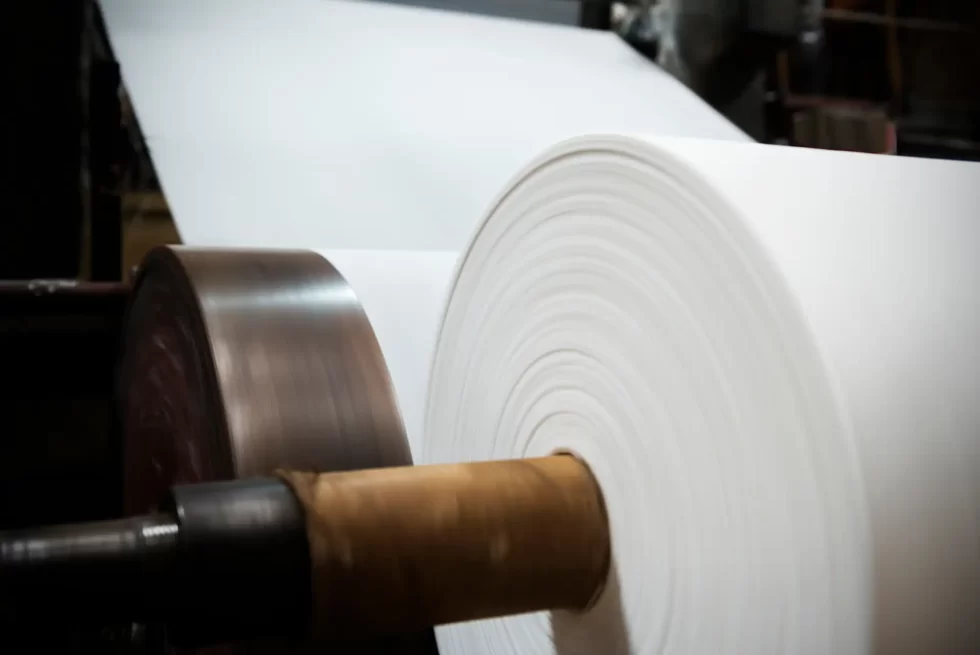The Downside of Downtime
In today’s highly automated manufacturing industry, downtime is the invisible villain that every operation dreads. One of the most common causes of this unwelcome pause? The seemingly minor, yet highly disruptive issue of residue buildup on rollers. Especially prevalent in plastic manufacturing, pulp and paper production, and the printing industry, this challenge has pervasive effects on efficiency, revenue, and product quality.
Residue Buildup: A Sticky Situation
Residue buildup on rollers is an age-old problem, its roots buried deep within the routine processes of these three vital industries. From the onset, it appears as a trifling issue, but over time, this sticky conundrum can lead to severe operational hiccups and a noticeable decrease in product quality.
Plastic Manufacturing
Plastic manufacturing, a colossal industry that touches every facet of our daily lives, is the first on our list. When polymers, the core material for plastic products, pass through the heated rollers, they can leave a sticky residue that builds up over time. This buildup not only necessitates constant maintenance, but it can also affect the end product’s quality, resulting in inconsistencies in thickness and texture.

Pulp and Paper
Next, we turn to the pulp and paper industry, where wood chips transform into paper under the watchful eye of machines outfitted with massive rollers. However, as the pulp is pressed and dried, it leaves a trail of residue on the rollers. Over time, this residue can cause sticking and, in severe cases, jamming and paper breaks leading to unexpected downtime, costly repairs, and reduced throughput.

Printing
Lastly, let’s delve into the world of printing, where issues of ink transfer present unique challenges. The printing process involves rollers meticulously applying ink onto paper, but this procedure doesn’t always go as smoothly as intended. Ink, by its very nature, has a tendency to adhere to the rollers over time, creating a thick, sticky residue that interferes with the roller’s smooth operation.
The typical solution has been frequent and thorough maintenance, involving the running of large amounts of paper across the rollers to clean off the excess ink. However, this method presents a whole new problem: waste. The paper used in the cleaning process cannot be reused, resulting in not only a significant waste of material, but also an unnecessary contribution to environmental waste.
Addressing these challenges requires a shift from traditional methods, a transformation that can be ushered in by adopting innovative solutions like Fluoron’s fluoropolymer sleeves. These sleeves not only minimize residue buildup and sticking but also significantly reduce the amount of paper waste generated by maintenance operations. Hence, they present an effective and eco-friendly solution to the issues associated with ink transfer in the printing industry.

The Cost of Downtime
The financial repercussions of these unscheduled pauses in production can be significant. According to a study by Aberdeen Research, unplanned downtime can cost a company as much as $260,000 an hour.
While this figure is astounding, it’s only the tip of the iceberg. The impact on a company’s reputation due to decreased product quality can be immeasurable, leading to lost customers and a dwindling market share. The residual effects from downtime also include overtime expenses for personnel and the cost of repairs or part replacements.
Turning the Tide
While residue buildup and sticking may seem like insurmountable problems, they are not without solutions. Effective preventive maintenance, the use of high-quality materials, and investment in cutting-edge technology can significantly reduce the frequency and severity of these issues.
As with any challenge, the first step is recognizing the problem. By understanding the effects of downtime and the role residue buildup plays in it, manufacturers can mitigate the risk and ensure a smoother, more productive workflow.
In the end, the downside of downtime serves as a reminder of the need for constant vigilance and proactive problem-solving in manufacturing. It may seem like a small issue, but in the fast-paced world of production, every second counts, and no problem is too insignificant to ignore.

The Fluoron Solution: Beat the Buildup with Fluoropolymer Sleeves
Addressing this issue head-on is Fluoron, a leading player in the manufacturing sector, offering an ingenious solution that drastically minimizes sticking and buildup residue. Fluoron has developed a range of nonstick heat shrinkable fluoropolymer sleeves that shrink onto rollers.
This innovative design is not only easy to install but also creates an ultra-smooth, non-stick surface that effectively repels any form of residue. Regardless of whether you are in the plastic manufacturing, pulp and paper, or printing industry, these sleeves can be a game-changer.
Through its pioneering approach, Fluoron has already aided thousands of companies across a spectrum of industries worldwide. These enterprises have effectively combatted the sticking and buildup problems with the deployment of Fluoron’s fluoropolymer sleeves. From the high-tech factories in Asia to the bustling production lines in Europe and America, Fluoron’s innovative solution is revolutionizing how industries approach the residue challenge, effectively turning a sticky situation into a seamless production experience.
They drastically reduce the frequency and severity of maintenance, and in some cases altogether eliminate residue buildup, curbing downtime and preserving product quality. By investing in Fluoron’s fluoropolymer sleeves, companies can increase their operational efficiency, decrease downtime, and ensure that the menacing residue buildup is a problem of the past. This groundbreaking solution reinforces the fact that with the right approach and technology, no challenge is too big to overcome.
Would you like to chat with one of our specialists? Send us a quick email and we’ll get back to you shortly!





